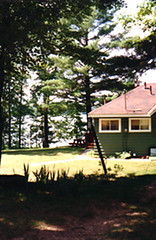A few days ago, Advertising Age (Ad Age), which has a combined online and print reach of 697,000 readers (approximately half online), acquired Todd Andrlik’s “multi metric” methodology, the ranking system used to create Todd And’s Power 150, which is probably the most quoted blog ranking system around.
What does that mean?
That seems to be the question of the week. The acquisition has created a buzz, especially among those who have submitted their sites and are currently ranked. In fact, enough social media insiders like ExperienceCurve and The Viral Garden have asked "What does it mean?" that Andrlik went back and compiled the answers from Jonah Bloom, editor of Ad Age, asking: What does it mean?
“The fact we’ll now also be ranking the media and marketing blogs says a lot about how important that community has become in a very short time,” said Bloom. “Here at Ad Age we have no immediate plans to monkey with Todd’s subjective evaluations. I like that the ranking does have a qualitative filter, and that Todd is that filter.”
What does that mean?
It means more than it says. It means magazine editors are becoming much more adept at talking like public relations practitioners. It means Andrlik will be sticking around as long as it suits Ad Age. It means Ad Age will keep the ranking system in place for the short term. It means Ad Age has acknowledged the growing influence of blogs at a time when print media prefers to ignore them (not one print publication has formally announced the acquisition, including Ad Age). And it means Ad Age, given its close proximity to communication-related industries, recognizes that the time to position a publication as an online content leader is right now.
What does that mean?
It means convergence through quiet acquisition. As I have written before, the future of social media will likely play out much like the Web site boom in the early 1990s. On the front end, advertising agencies called Web sites a fad that targeted too small of a niche audience to be acknowledged whereas IT people saw it as a pristine time to charge tens of thousands of dollars to do what no one wanted to do.
It didn’t take long before advertising agencies realized that the high price of Web site design was cutting into their advertising budgets. So, they quickly and quietly bought up the competition. While there are still a few Web design firms in existence today, the field has been largely absorbed by communication-related companies.
Social media will likely go the same way over time; this time with advertising agencies, public relations firms, companies, and print publications all quietly taking a keen interest in and then acquiring social media content providers. Unlike Web sites though, there will always be new start up content providers waiting in the wings.
When will this happen? Um, long before yesterday.

What does that mean?
That seems to be the question of the week. The acquisition has created a buzz, especially among those who have submitted their sites and are currently ranked. In fact, enough social media insiders like ExperienceCurve and The Viral Garden have asked "What does it mean?" that Andrlik went back and compiled the answers from Jonah Bloom, editor of Ad Age, asking: What does it mean?
“The fact we’ll now also be ranking the media and marketing blogs says a lot about how important that community has become in a very short time,” said Bloom. “Here at Ad Age we have no immediate plans to monkey with Todd’s subjective evaluations. I like that the ranking does have a qualitative filter, and that Todd is that filter.”
What does that mean?
It means more than it says. It means magazine editors are becoming much more adept at talking like public relations practitioners. It means Andrlik will be sticking around as long as it suits Ad Age. It means Ad Age will keep the ranking system in place for the short term. It means Ad Age has acknowledged the growing influence of blogs at a time when print media prefers to ignore them (not one print publication has formally announced the acquisition, including Ad Age). And it means Ad Age, given its close proximity to communication-related industries, recognizes that the time to position a publication as an online content leader is right now.
What does that mean?
It means convergence through quiet acquisition. As I have written before, the future of social media will likely play out much like the Web site boom in the early 1990s. On the front end, advertising agencies called Web sites a fad that targeted too small of a niche audience to be acknowledged whereas IT people saw it as a pristine time to charge tens of thousands of dollars to do what no one wanted to do.
It didn’t take long before advertising agencies realized that the high price of Web site design was cutting into their advertising budgets. So, they quickly and quietly bought up the competition. While there are still a few Web design firms in existence today, the field has been largely absorbed by communication-related companies.
Social media will likely go the same way over time; this time with advertising agencies, public relations firms, companies, and print publications all quietly taking a keen interest in and then acquiring social media content providers. Unlike Web sites though, there will always be new start up content providers waiting in the wings.
When will this happen? Um, long before yesterday.
















